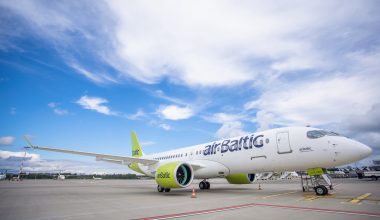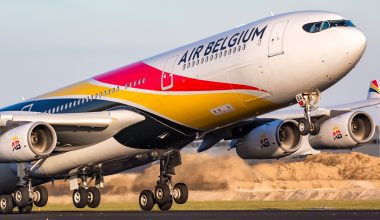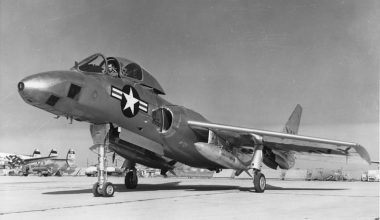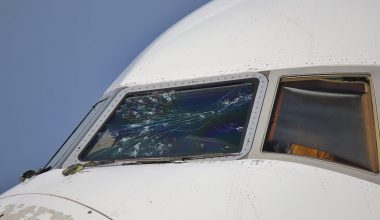What Is Airbus Actually Working On? Does Airbus Actually Working On A360 or A370? The Boeing family had dominated the market for over five decades since it was established in July 1916 in Seattle-Washington, USA. They lead an absolute monopoly in the aviation industry until Airbus stepped up to challenge the biggest aviation company in history; Airbus was founded in December 1970 in Blagnac, France.

Since then, Airbus and Boeing became household names in the aviation market, holding 99% of the market share together. Besides the commercial aircraft market, Airbus also dominates the civilian helicopter segment with a market share of 54%; meanwhile, its competitor, Boeing, leads the military attack and transport helicopter segment. So, being on almost equal footing, the two of these competitors have always thrived to surpass each other with cutting-edge aircraft upgrades that would surpass its predecessor and the competitors.
However, in the case of the Airbus family, after the launch of its latest addition of Airbus A350-900 in January 2015, A350-1000 in February 2018, both of which started their initial service with Qatar Airways been no new confirmed news about their upgrade in the A350 series. The only new source of news the Airbus family has announced on its A-series is the end of the Airbus A380, the world’s largest passenger plane with 853 passenger capacity and quad GP7200 engines. Airbus announced in February 2019 its plan to cease the production of the mighty vessel by 2021. The giant vessel had made its debut in the commercial market in October 2007 with Singapore Airlines.
Henceforth, the world has been eager about the new projects on the A-300 or A-200 series that the Airbus family is planning; at this technological marvel age, it is expected that one of the biggest names in the aviation industry will bring out a revolutionary project that could redefine flying. Then-there comes ‘A360’, the potential future project of the Airbus family. There have been tons of wild speculation regarding this potential new project of the Airbus segment, which has not been confirmed yet by the company.
So, Will There Ever Be A Airbus A360?
The thoughts on the new probable aircraft A360 haven’t stopped pouring. It has been almost like the ‘cat in the box situation, there might be a new successor for the A-300 series, or the company might totally give up working on broadening its most prominent series. Only the Airbus family itself can confirm the spiraling news now; however, in September 2018, Forbes published the news shared by the spokesperson on regards to the Airbus family, it was mentioned that the company was not planning for any new addition in the A-300 series to the fill the gap. The programs for the remaining slots like A360, A370, or A390 weren’t on the table talk for the company’s future.
The spokesperson had also mentioned the wide acceptance and dominance of the A300 and A200 series in the aviation market and how early it was to think of any other series for the company without any initial plans to launch a new project firsthand. As the news was released in 2018, the company might have already decided on a new aircraft project that could possibly be dominant in the aviation market.
So, we might be able to see the new additions to the A-200 or A-300 series, or the giant aviation company might opt out totally for another name and series that would be dominant in the future generation.
Future Competition For Airbus
Although the Airbus family hasn’t announced any new projects in its popular A-series segment, it has been quite clear what it should set eyes on to surpass, ‘Boeing 777X’. The latest upgrade in the Boeing family’s jet segment will be a worthy adversary for the future jetliners upgrades from the Airbus family.
The ‘Boeing 777X’ newest upgrade in the jetliner segment by the Boeing family is expected to be the world’s largest and most efficient two-engined jetliner, which will be unmatched in every aspect of its performance. The newest addition to the Boeing family, 777X, has made some major breakthroughs in both aerodynamics and the engines segment. The spacious design, comfortable and attractive custom architecture feature of the Boeing 777X is expected to deliver the flight experience of the future to its passengers.
The aircraft will be available in two variants, Boeing 777-8 and Boeing 777-9. The 777-8 variant has a seating capacity of 384 passengers with a length of 69.79 meters and a twin-aisle widebody feature. The powerful and fuel-efficient engine of the Boeing 777-8 can take the aircraft up to 8,730 miles on a single flight. Similarly, the Boeing 777-9 variant comes with larger passenger space; the aircraft, 76.72 meters long, can fit up to 426 passengers in two-class segments. Built with the same engine as in the 777-8 variant, the Boeing 777-9 aircraft can cover a distance of 7,285 miles in a single flight.
The engines used in these variants of the Boeing family have been the most phenomenal upgrade that has introduced the jetliners to the future. The GE9X engines used in these variants are considered the world’s largest and powerful aircraft engines integrated with GE’s cutting edge technology turning it into a fuel-efficient beast. This engine was designed for the sole purpose of powering the latest achievement of the Boeing family, the 777X series.
The Boeing 777X series was introduced in November 2013 to make an initial flight with Emirates in June 2020. However, due to the outbreak of Covid-19, the schedule was moved to 2022, but, later in January 2021, it was revealed that the flight’s delivery would only occur in late 2023; similarly, another variant of Boeing, 777-8, is expected to reach the market by the end of 2022.
What Is Airbus Actually Working On?
Airbus announced its plan to develop zero-emissions aircraft on the occasion of ‘Zero Emission Day’ on 21st September 2020. In the announcement, the chief executive of Airbus, Guillaume Faury, stated that the three ZEROe concept designs of the project would bring a revolutionary change in the aviation sector, making a historical moment that the transportation segment has never seen. He further added that how he believed that opting for the use of the hydrogen fuel for both synthetic fuels as well as the primary source for the aircraft has the potential to significantly reduce the impact the aviation sector has on the environment,
Airbus’s initiative to reach the goal of zero-carbon aircraft has made a huge impression in the industry; if succeeded, this could introduce the aviation industry to a new era. The age with zero-emission flights would mean the long-awaited dream of the aviation industry that could change the future for the better.

Hydrogen can be used in three ways for an aircraft, first- direct combustion through the modified gas turbines, second convert it into electric energy through a fuel cell; and third-combining it with CO2 to make synthetic kerosene. The ZEROe project of Airbus is planning to follow the first two methods for its innovative aircraft. The main challenge the aircraft is expected to face is the required volume of hydrogen as it is required four-fold more than kerosene to have the same level of efficiency. To overcome this challenge, the ZEROe project will be testing on the three model aircraft in the starting phase.
I) Turbofan Design: The mid-sized aircraft has been designed to accompany 120-200 passengers in a flight with 2,000+ miles reach. The direct hydrogen combustion of hydrogen will power the aircraft’s engine through the modified gas turbine. The fuel tanks for the liquid hydrogen will be stored and distributed from the gas tanks behind the rear pressure bulkhead in this design.
II) Turboprop Design: The second design of the project ZEROe will be of small-size aircraft that can carry up to 100 passengers max. In this model, the turbofan engine will be replaced by a turboprop engine that the Hydrogen combustion of hydrogen will power through the modified gas turbine like in the first design. The propeller attached engine will be able to travel more than 1,000 miles in a single flight; this aircraft has been designed to dominate the segment of the short-haul trip.
III) Blended-wing Body Design: Lastly, the blended wing design aircraft from the ZEROe project will come with refined futuristic looks. On the aspects of performance, it will be a mid-range aircraft that will be able to carry up to 200 passengers. This blended-ing aircraft’s wing-merged-to-body design is anticipated to give similar mileage as the turbofan design. The futuristic approach to design wide-spread architecture will allow Airbus to design spacious and attractive cabin layouts. Similarly, the broad layout has also been expected to give multiple choices for Airbus to store the hydrogen fuel in the aircraft.
So, even though there haven’t been any major signs on the continuation of its A-series by the Airbus family, the aviation enthusiasts who are eagerly awaiting the new addition in the A-300 or A-200 series will undoubtedly be able to witness the transition Airbus is taking to take us to the future with its game-changing ZEROe project.






